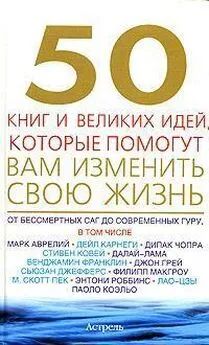Джессика Лоури - Не проблема, а сюжет для книги. Как научиться писать и этим изменить свою жизнь
- Название:Не проблема, а сюжет для книги. Как научиться писать и этим изменить свою жизнь
- Автор:
- Жанр:
- Издательство:Литагент 5 редакция
- Год:2020
- Город:Москва
- ISBN:978-5-04-092124-9
- Рейтинг:
- Избранное:Добавить в избранное
-
Отзывы:
-
Ваша оценка:
Джессика Лоури - Не проблема, а сюжет для книги. Как научиться писать и этим изменить свою жизнь краткое содержание
Не проблема, а сюжет для книги. Как научиться писать и этим изменить свою жизнь - читать онлайн бесплатно ознакомительный отрывок
Интервал:
Закладка:
Если диалог внутренний (то есть герой думает, а не говорит вслух), его можно обозначить курсивом и кавычками.
Я исправила свою ошибку и сделала вторую попытку. «Вот черт, форматирование диалогов – сложная вещь!»
Обращайте внимание на правила форматирования текста, читая книги. Этим правилам подчиняются практически все романы. Единственное исключение составляют шрифты – готовя книгу к печати, издатель обычно сам определяет шрифтовое решение.
Приложение Е. Разбор романа «Дом на улице Манго»
В главе 7 «Структурируйте свою историю» мы обсуждали сюжет романа Сандры Сиснерос «Дом на улице Манго». А теперь мы разберем его подробно, сцена за сценой. Мы увидим, как сцены составляют сюжет книги, и постараемся понять, где Сиснерос использовала впечатления собственной жизни.
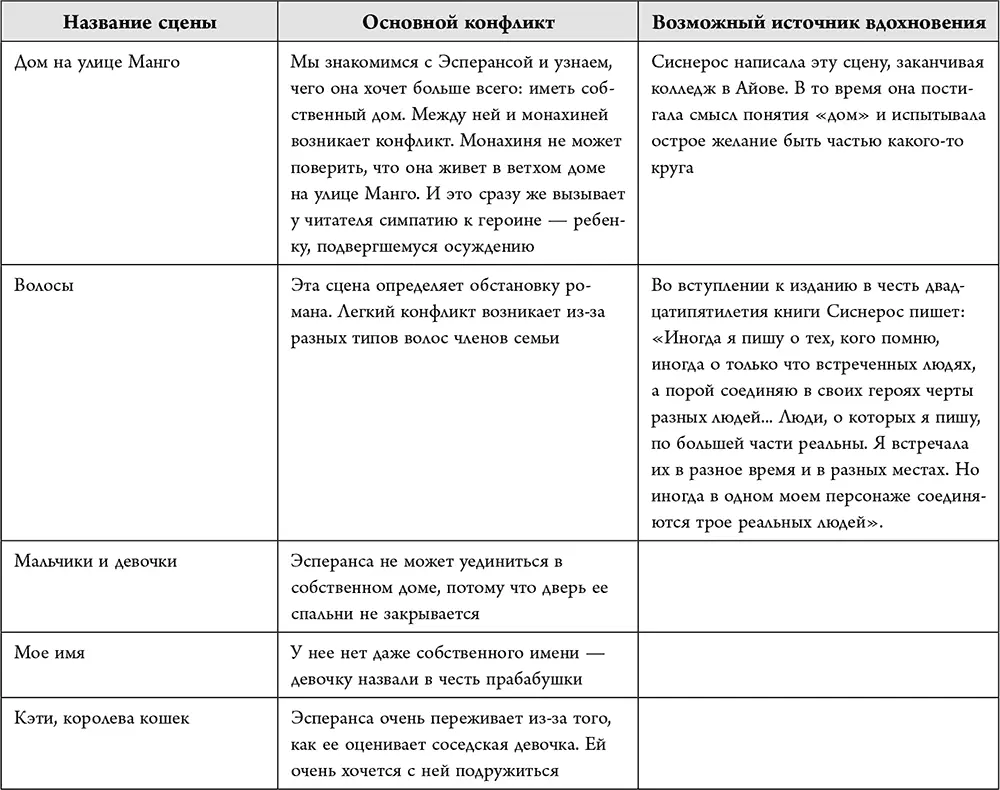
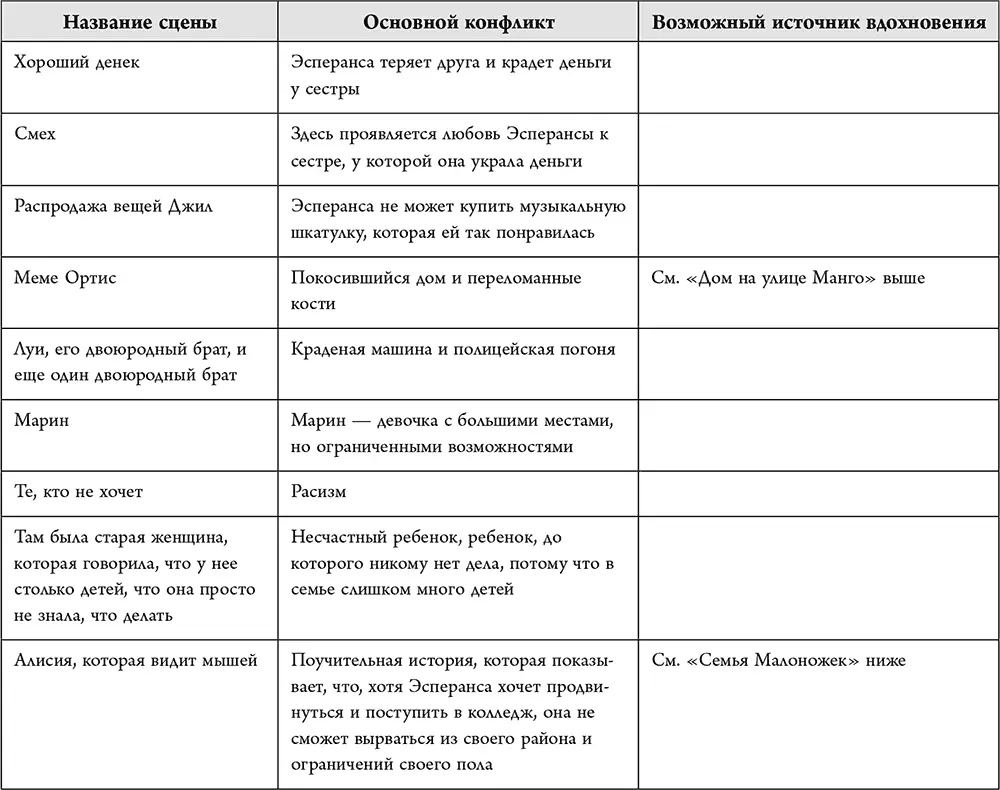
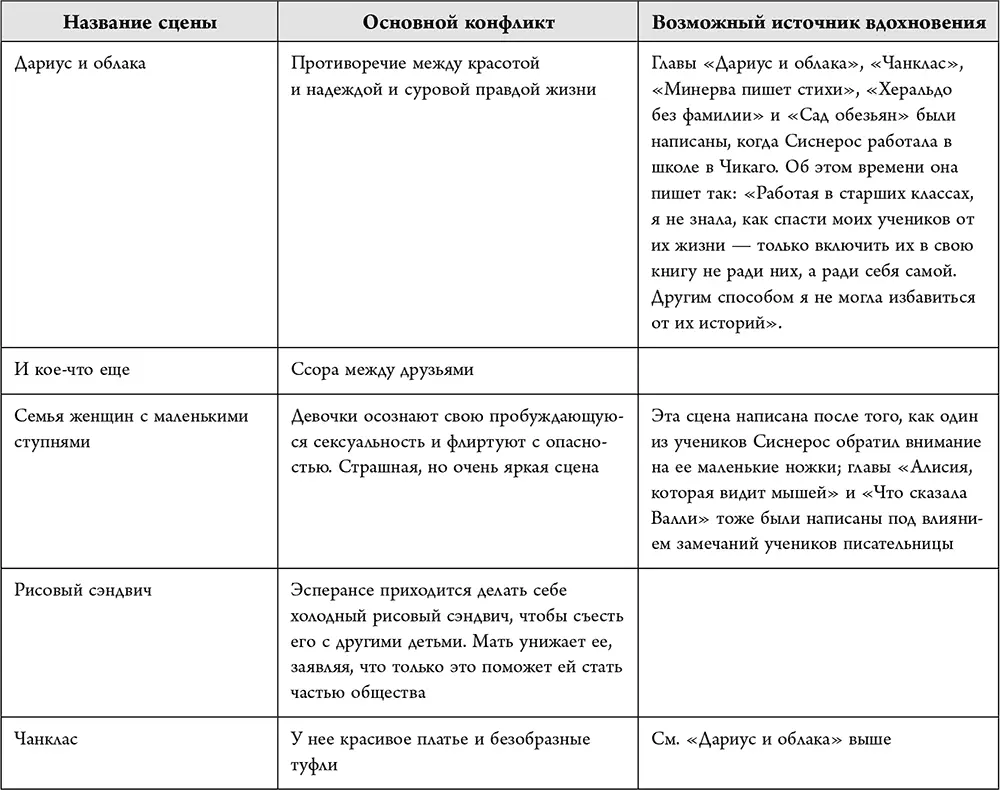

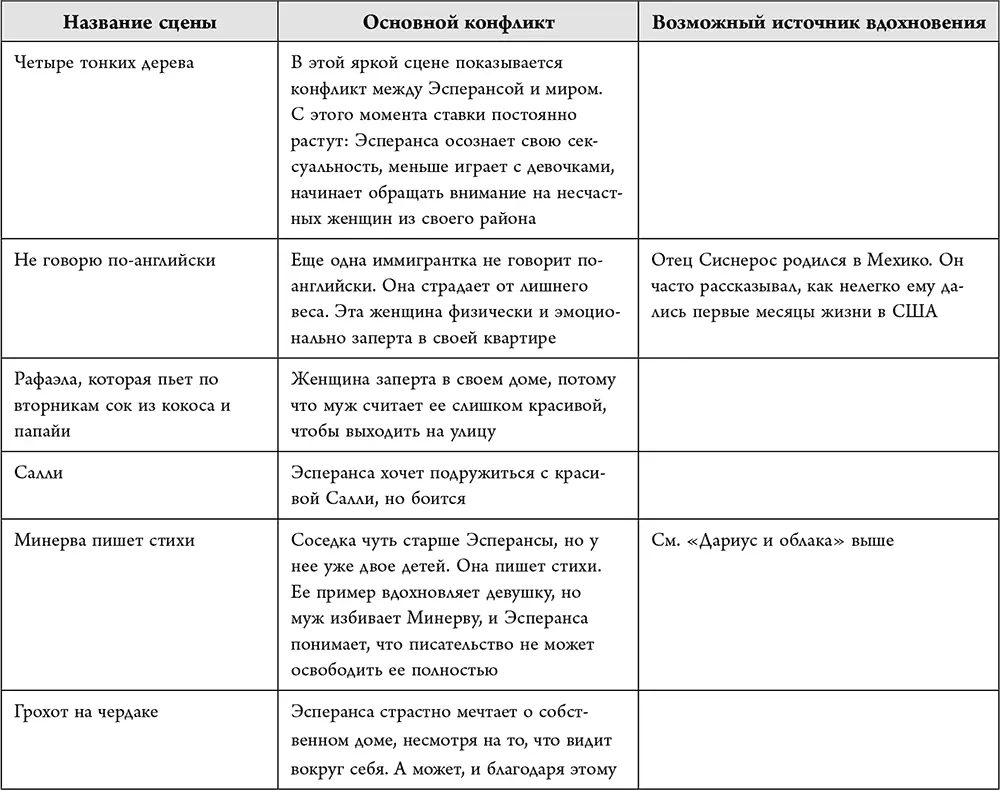
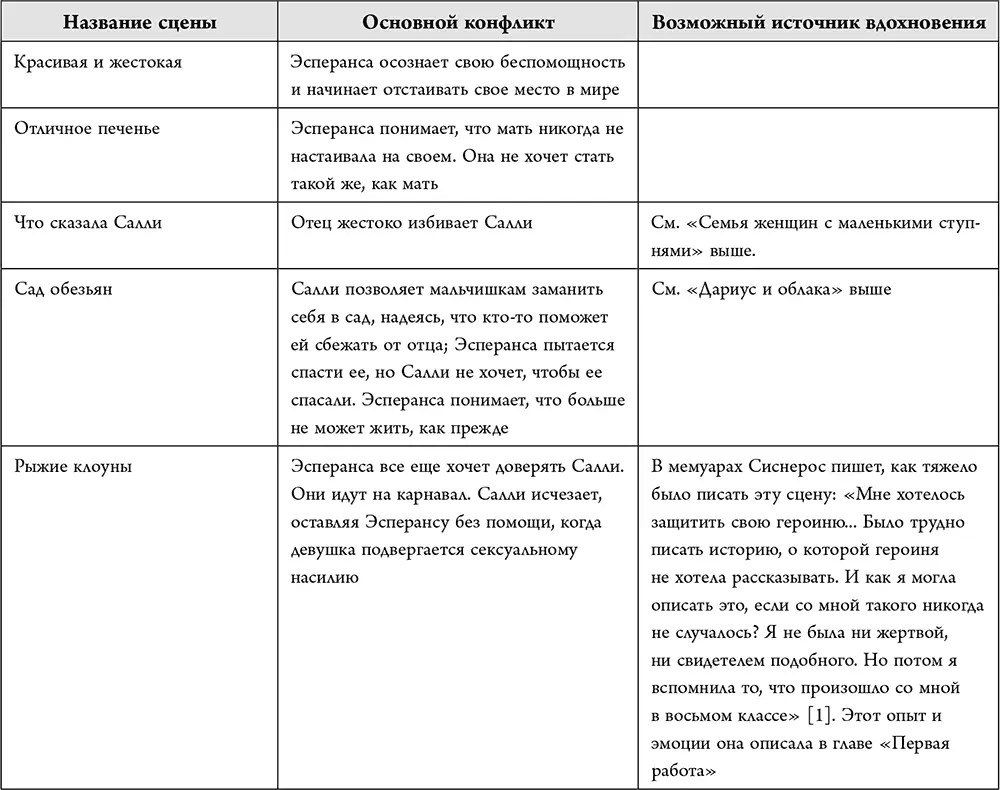
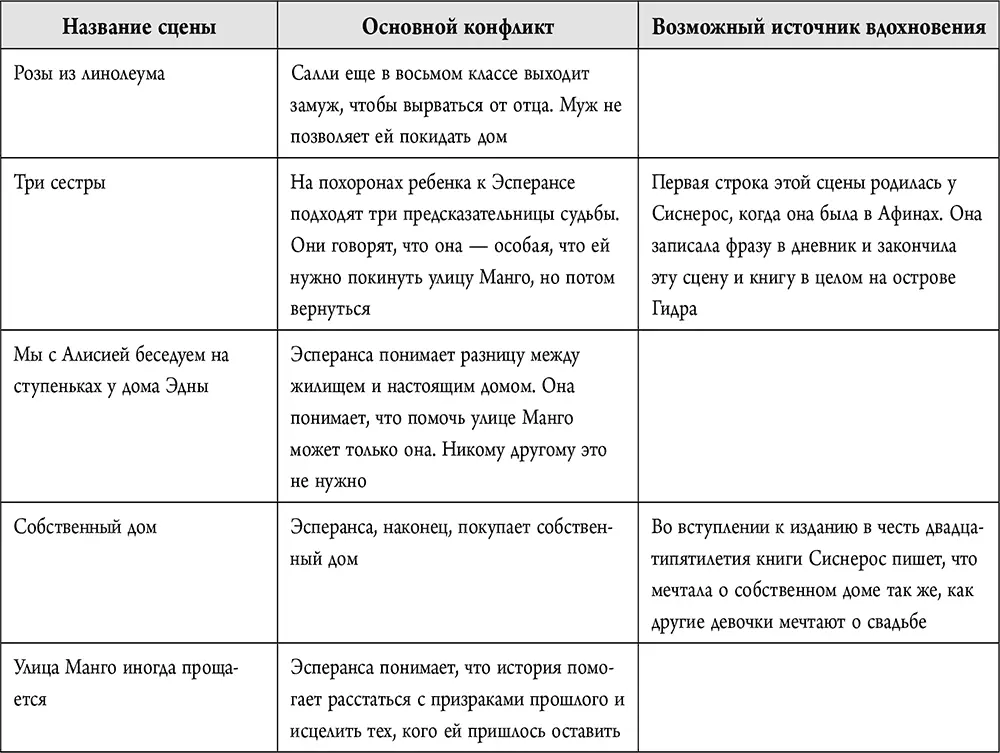
Приложение F. Шаблон романа
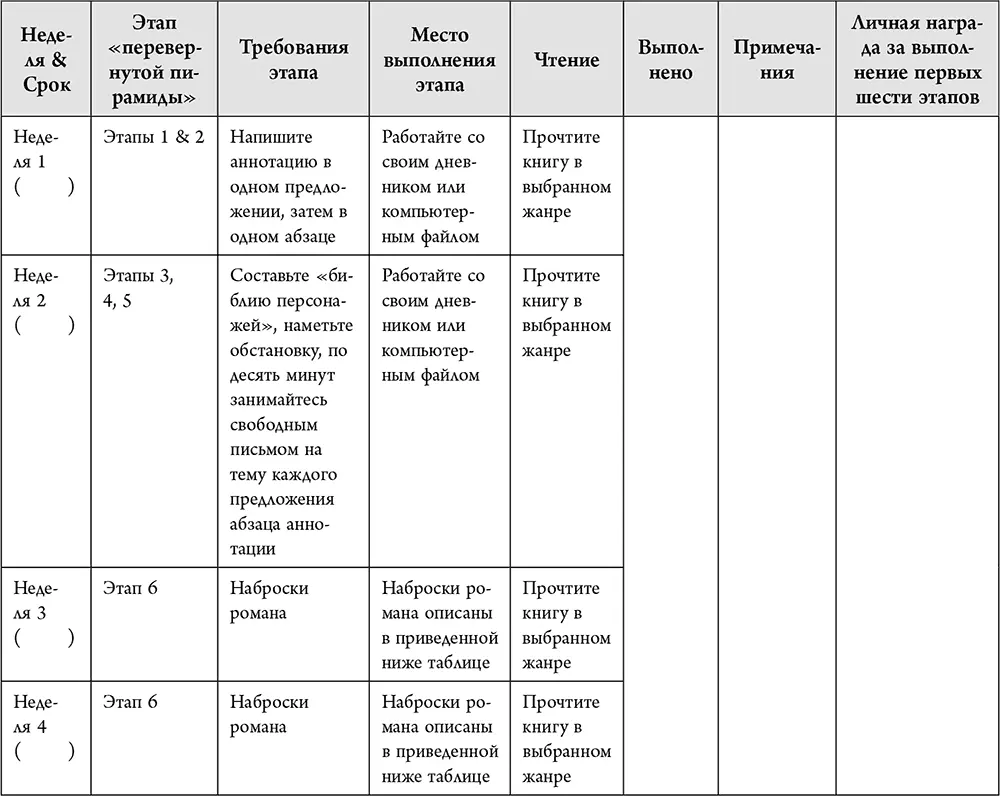
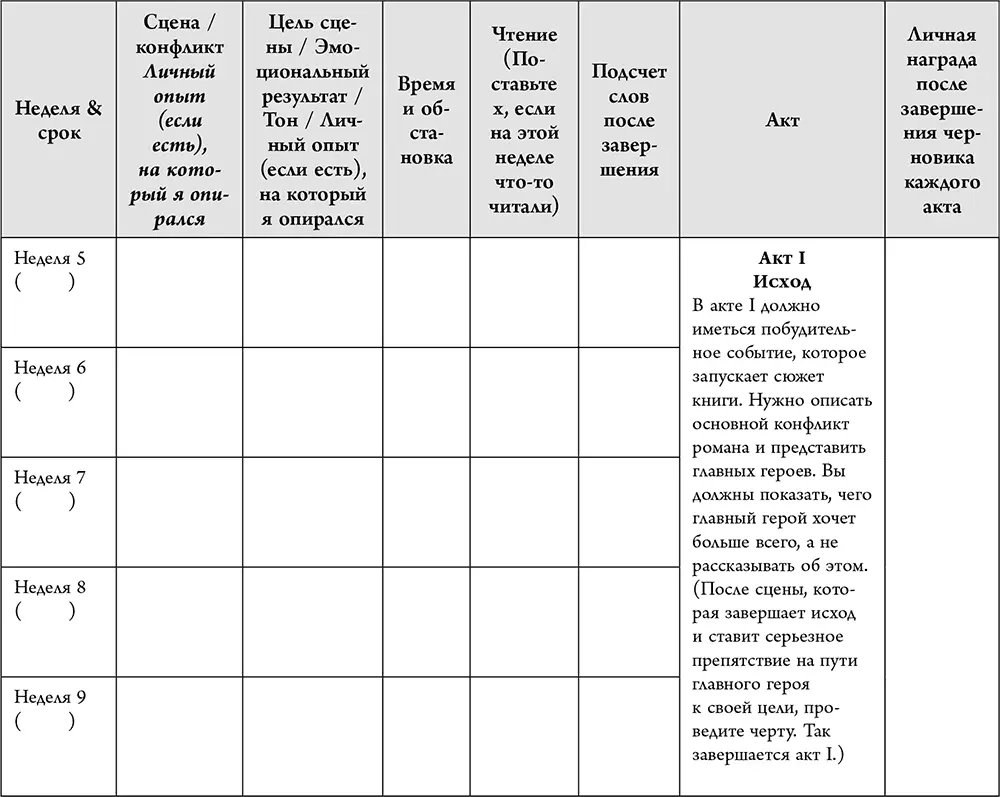
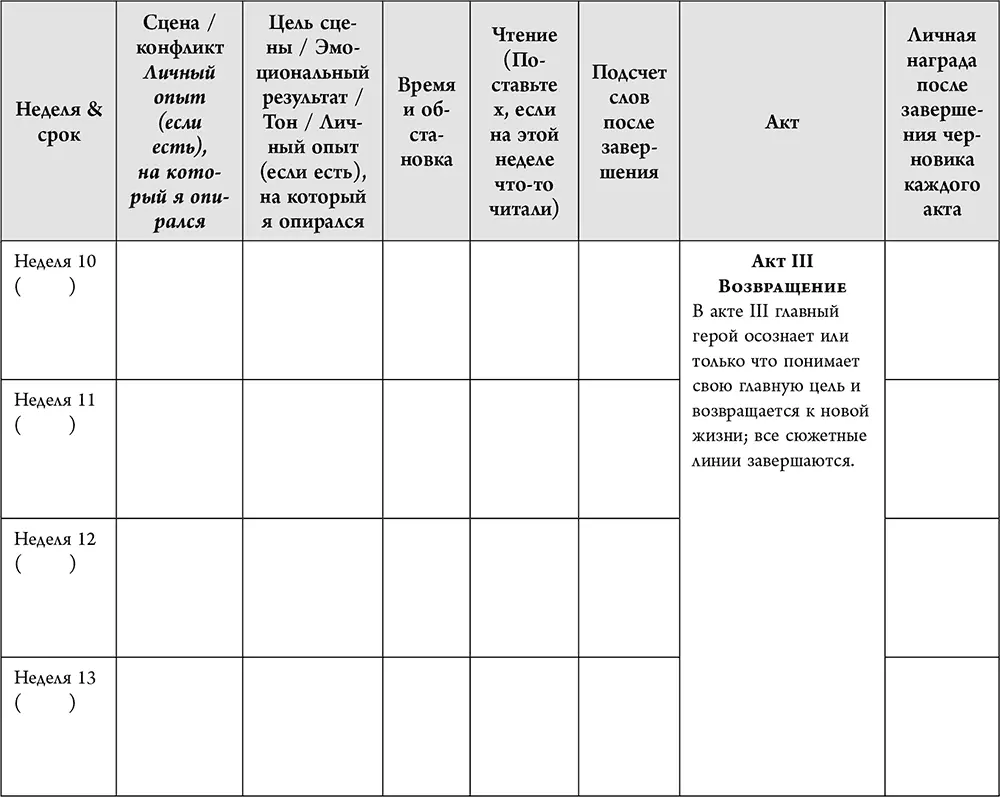
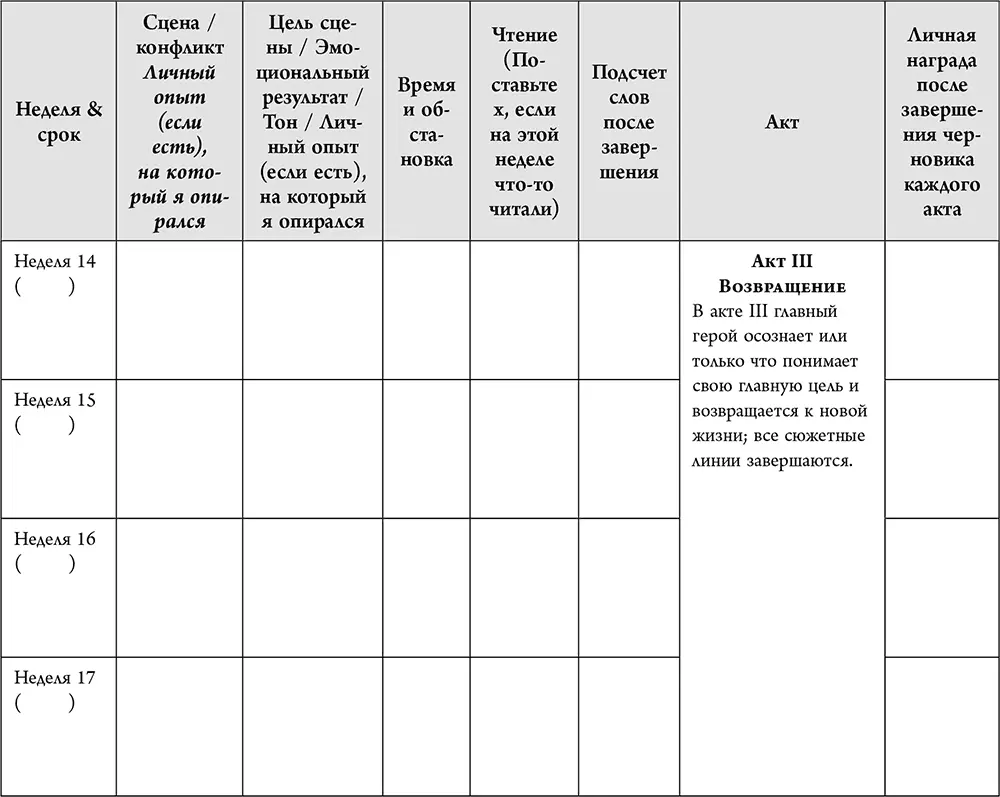
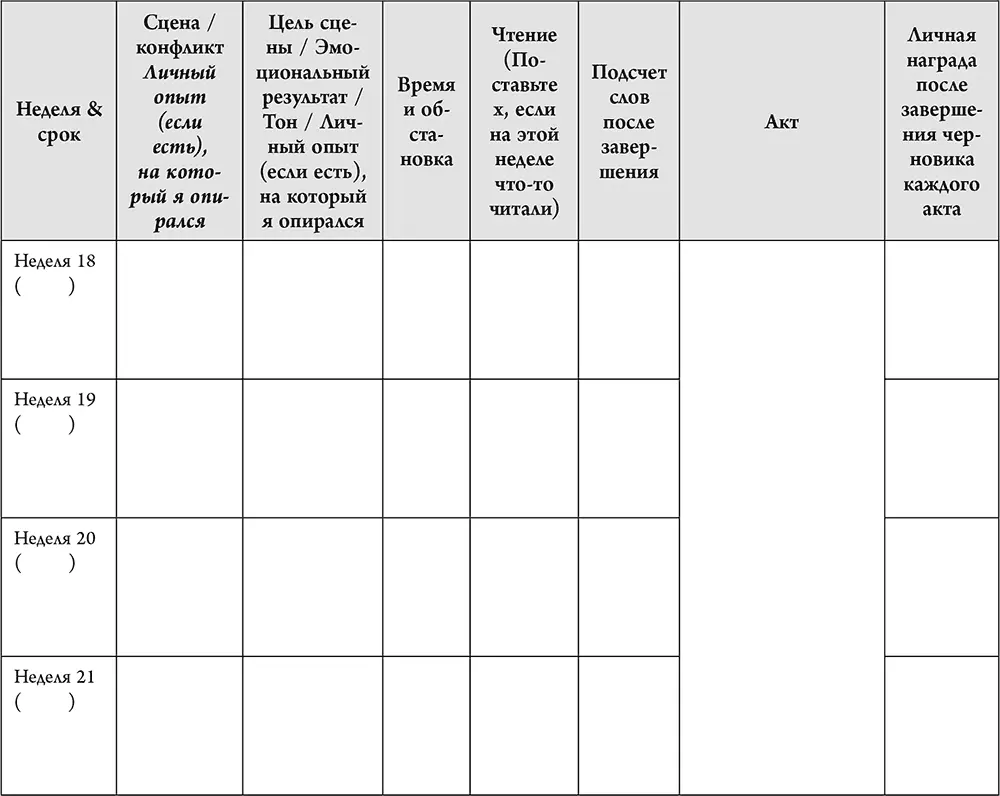
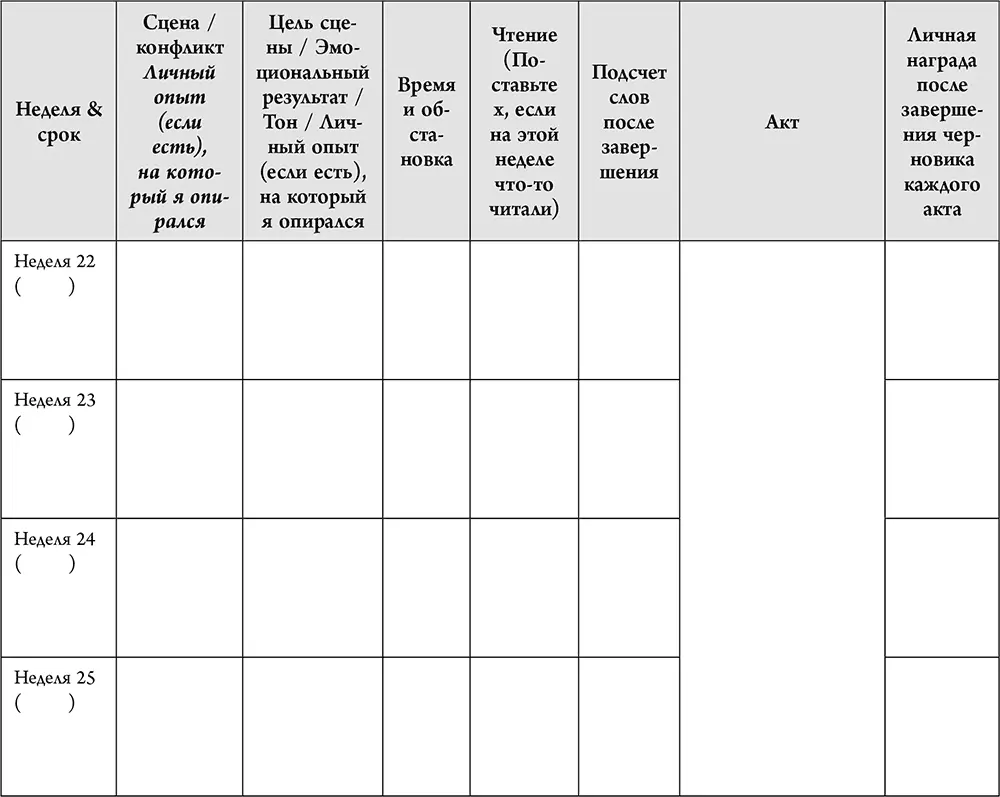
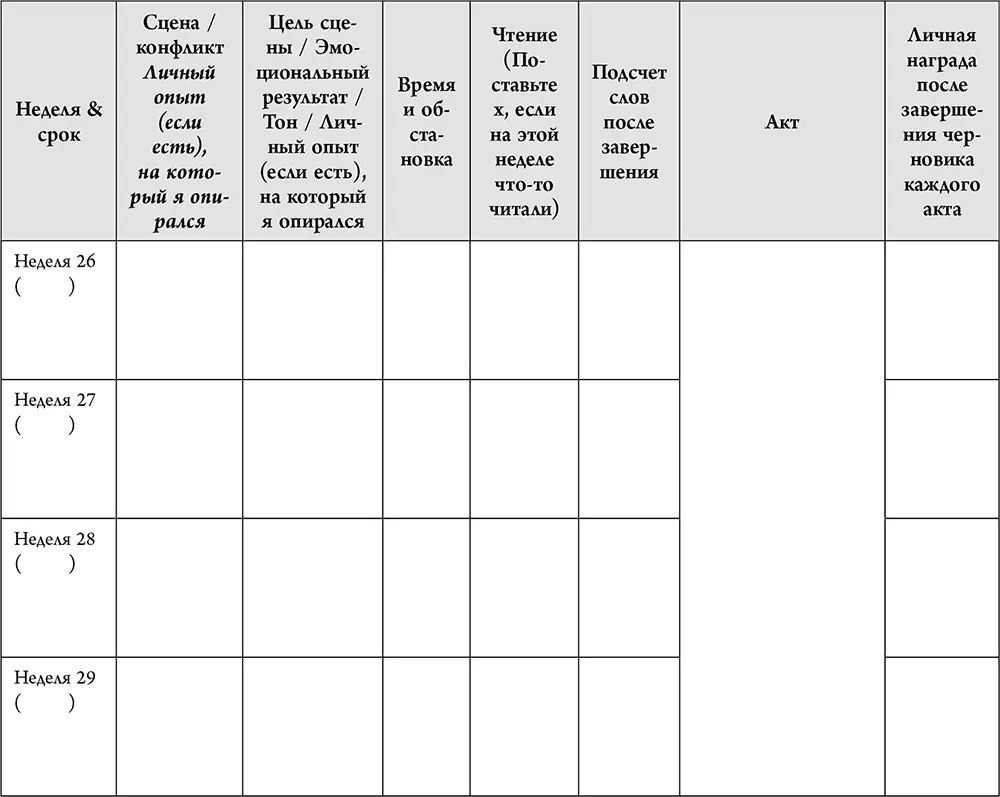
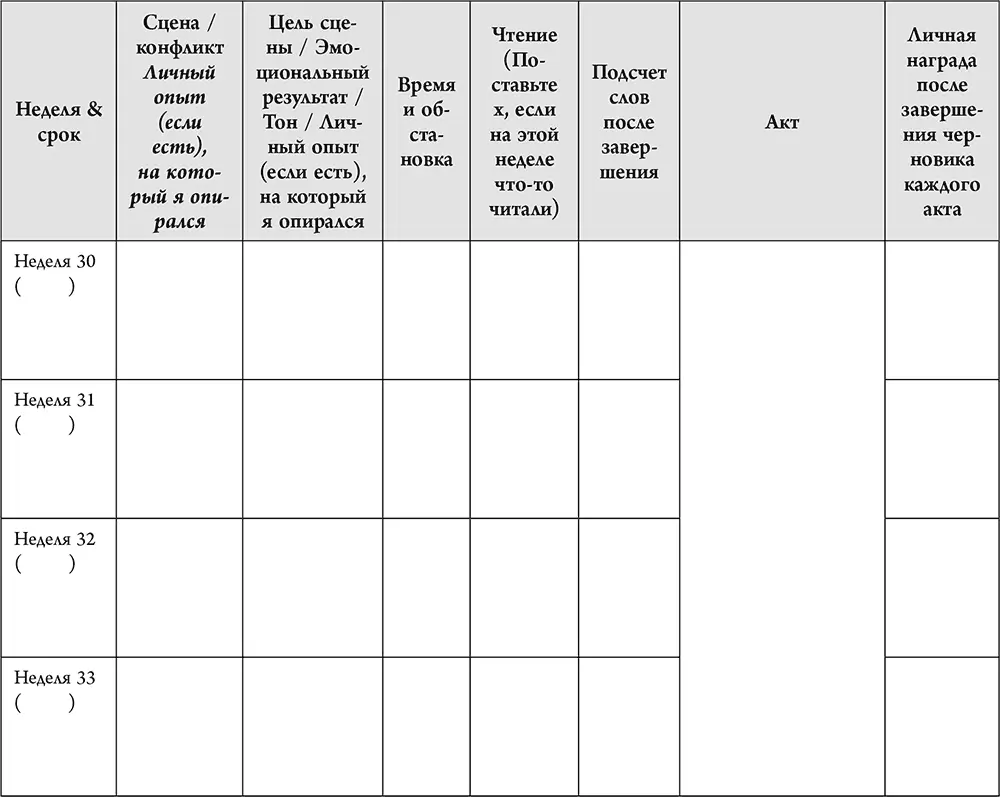

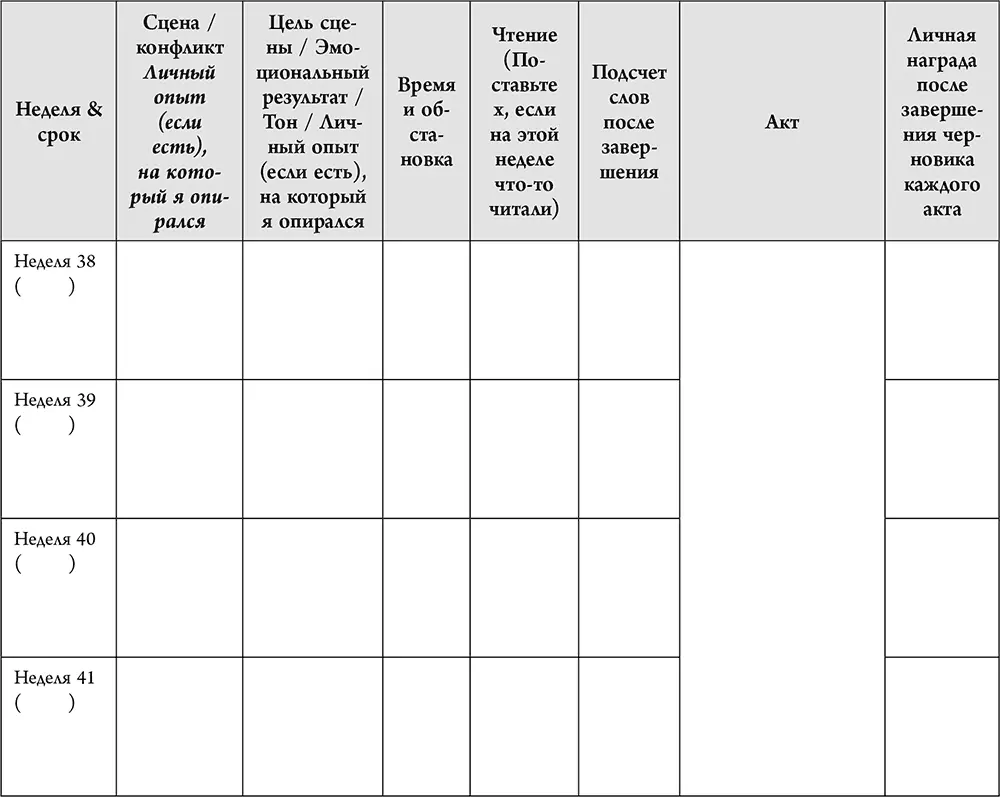
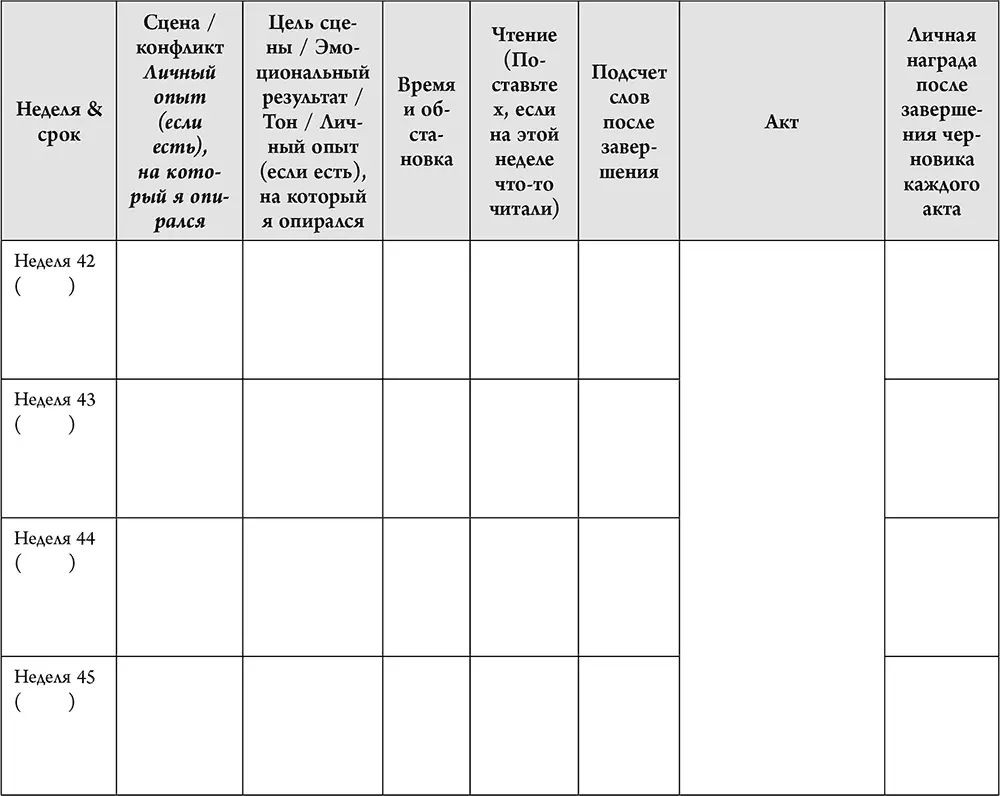
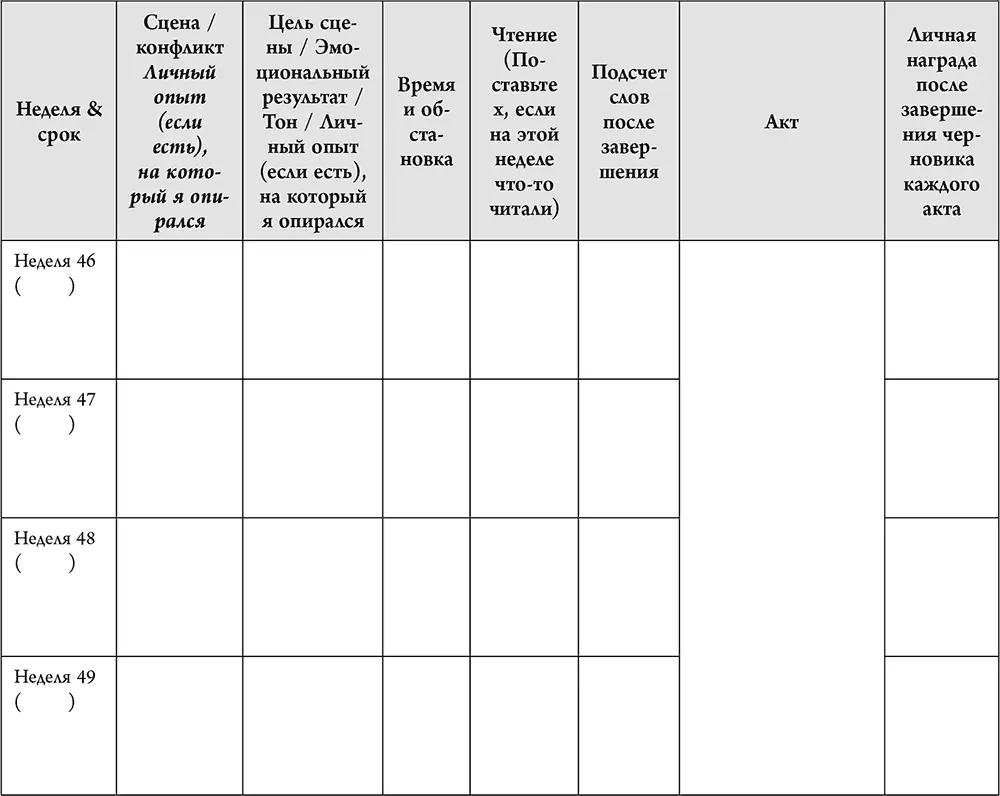
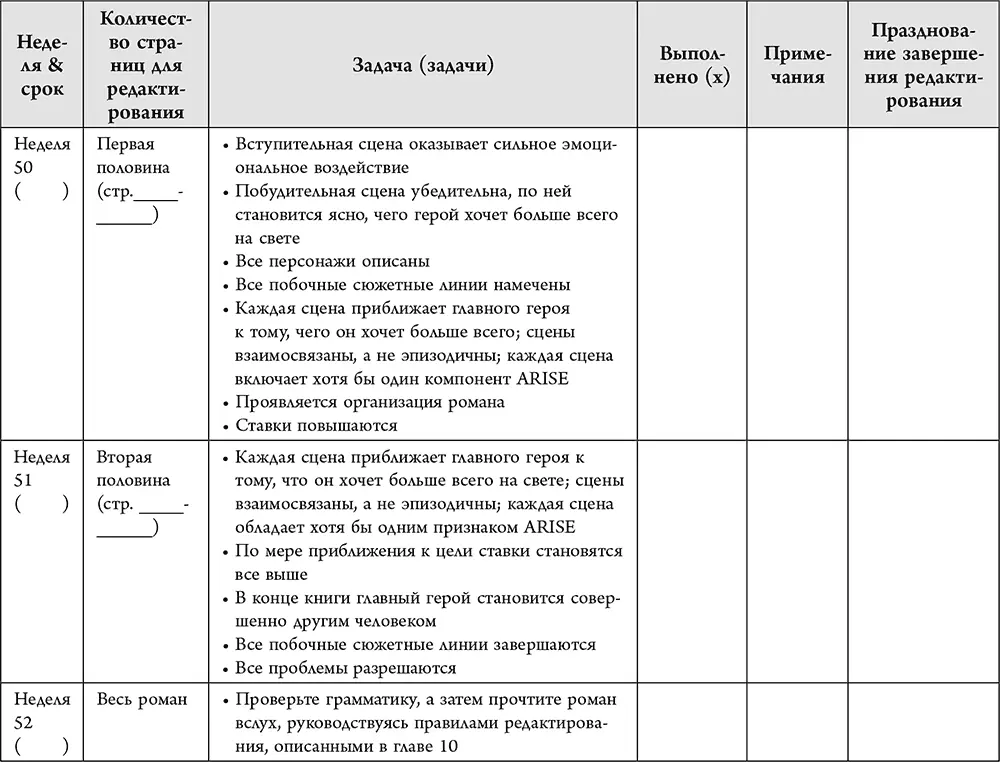
Библиография
Глава 1
1. Brashares, H. J., & Catanzaro, S. J. (1994). Mood regulation expectancies, coping responses, depression, and sense of burden in female caregivers of Alzheimer’s patients. Journal of Nervous and Mental Disease, 182 , 437–442.
2. Esterling, B. A., Antoni, M. H., Kumar, M., & Schneiderman, N. (1990). Emotional repression, stress disclosure responses, and Epstein-Barr viral capsid antigen titers. Psychosomatic Medicine, 52 (4), 397–410.
3. Greenberg, M. A., Wortman, C. B., & Stone, A. A. (1996). Emotional expression and physical health: Revising traumatic memories or fostering selfregulation? Journal of Personality and Social Psychology, 71 (3), 588–602.
4. Klein, K., & Boals, A. (2001). Expressive writing can increase working memory capacity. Journal of Experimental Psychology: General, 130 , 520–533.
5. Lepore, S. J., & Greenberg, M. A. (2002). Mending broken hearts: Effects of expressive writing on mood, cognitive processing, social adjustment, and health following a relationship breakup. Psychology and Health, 17 (5), 547–560.
6. Lepore, S. J., & Smyth, J. M. (eds.). (2002). The writing cure: How expressive writing promotes healing and emotional well-being . Washington, DC: American Psychological Association.
7. Norman, S. A., Lumley, M. A., Dooley, J. A., et al. (2004). For whom does it work? Moderators of the effects of writ en emotional disclosure in a randomized trial among women with chronic pelvic pain. Psychosomatic Medicine, 66 , 174–183.
8. Petersen, S., Bull, C., Propst, O., Det inger, S., & Detwiler, L. (2005). Narrative therapy to prevent illness-related stress disorder . Journal of Counseling and Development, 83(1), 41–47.
9. Petrie, K. J., Fontanilla, I., T omas, M. G., et al. (2004). Effect of writ en emotional expression on immune function in patients with Human Immunodef ciency Virus infection. A randomized trial. Psychosomatic Medicine, 66 , 272–275.
10. Scot, V. B., Robare, R. D., Raines, D. B., et al. (2003). Emotive writing moderates the relationship between mood awareness and athletic performance in collegiate tennis players. North American Journal of Psychology, 5 , 311–324.
11. Smyth, J. M., Stone, A. A., Hurewitz, A., & Kell, A. (1999). Effects of writing about stressful experiences on symptom reduction in patients with asthma or rheumatoid arthritis . Journal of the American Medical Association, 281 , 1304–1329.
12. Smyth, J. M., True, N., & Souto, J. (2001). Effects of writing about traumatic experiences: The necessity of narrative structuring. Journal of Social and Clinical Psychology, 20 , 161–172.
13. Ussher, J. M., Hunter, M., & Cariss, M. (2002). A woman-centred psychological intervention for premenstrual symptoms, drawing on cognitivebehavioural and narrative therapy. Clinical Psychology and Psychotherapy, 9 (5), 319–331.
14. Vromans, L. P., & Schweitzer, R. D. (2010). Narrative therapy for adults with major depressive disorder: Improved symptom and interpersonal outcomes. Psychotherapy Research, 21 (1), 4–15.
15. Weber, M., Davis, K., & McPhie, L. (2006). Narrative therapy, eating disorders and groups: Enhancing outcomes in rural NSW. Australian Social Work, 59 (4), 391–405.
Глава 2
1. Davis, J. (2004). The journey f om the center to the page: Yoga philosophies and practices as muse for authentic writing . New York: Gotham Books.
2. Furness, H. (2015, October 20). Internet gives readers ‘false sense of entitlement’, Joanne Harris says. The Telegraph . Retrieved from http://www.telegraph.co.uk/news/media/11941486/Internet-gives-readers-false-sense-of-entitlement-Joanne-Harris-says
3. Goldberg, N. (1986). Writing down the bones: Freeing the writer within . Boston: Shambhala.
4. Pennebaker, J. W. (1997). Opening up: The healing power of expressing emotions . New York: Guilford Press.
Глава 3
1. Berns, G. S., Blaine K., Prietula, M. J., & Pye, B. E. (2013). Short – and long-term effects of a novel on connectivity in the brain. Brain Connectivity, 3 (6), 590–600. doi: 10.1089/brain.2013.0166
2. Djikic, M., Oatley, K., & Moldoveanu, M. C. (2013). Opening the closed mind: The effect of exposure to literature on the need for closure. Creativity Research Journal, 25 (2), 149–154. doi: 10.1080/10400419.2013.783735
3. Kidd, D. C., & Costano, E. (2013). Reading literary f ction improves theory of mind. Science, 342 (6156), 377–380. doi: 10.1126/science.1239918
4. Oatley, K. (1999). Why ffction may be twice as true as fact: Fiction as cognitive and emotional simulation. Review of General Psychology, 3 , 101–117.
5. Wilson, R. S., Boyle, P. A., Yu, L., Barnes, L. L., Schneider, J. A., & Bennet, D. A. (2013). Life-span cognitive activity, neuropathologic burden, and cognitive aging. Neurology, 81 (4), 314–321. doi: 10.1212/ WNL.0b013e31829c5e8a
Глава 7
1. Cisneros, S. (2009). The house on mango street (2nd ed.). New York: Vintage.
2. Cisneros, S. (2015). A house of my own: Stories f om my life . New York: Alfred A. Knopf.
3. King, S. (2000). On writing: A memoir of the craf. New York: Scribner.
Глава 8
1. Hosseini, K. (2007). A thousand splendid suns . New York: Riverhead Books.
2. Munoz, L. M. (2014, June 28). What triggers spontaneous memories of emotional events? Cognitive Neuroscience Society . Retrieved from https://www.cogneurosociety.org/spontaneous_memories_weymar/
3. Munro, A. (1971). Lives of girls and women. Toronto: McGraw-Hill Ryerson.
4. Vermet en, E., & Bremner, J. D. (2003). Olfaction as a traumatic reminder in post raumatic stress disorder: Case reports and review. Journal of Clinical Psychiatry, 64 , 202–207.
Глава 9
1. Montgomery, D. (2013, February 8). Isabel Allende’s ‘The House of the Spirits’ at GALA Hispanic Theatre. Washington Post. Retrieved from ht p:// www.washingtonpost.com/entertainment/theater_dance/isabel-allendes-the-house-of-the-spirits-at-gala-hispanic-theatre/2013/02/07/409b202e-6ec9-11e2-aa58-243de81040ba.story.html
2. Zinsser, W., editor. (1989). Paths of resistance: The art and craf of the political novel . Boston: Houghton Mif in.
Читать дальшеИнтервал:
Закладка:





